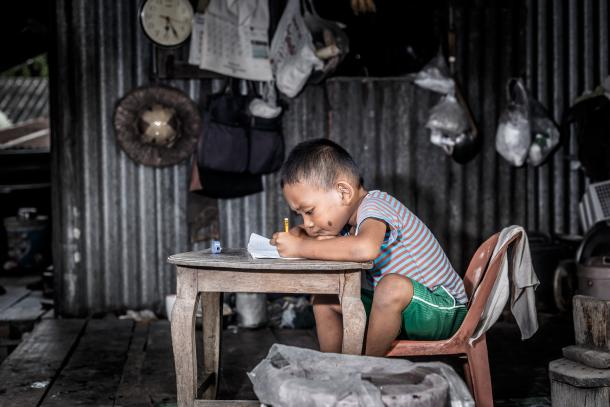
October 17 is the International Day for the Eradication of Poverty. (Photo from Shutterstock.com)
Peking University October 17, 2024: Today marks the International Day for the Eradication of Poverty, which was declared by the UN General Assembly in 1992. The theme for 2024 is Ending Social and Institutional Maltreatment Acting together for just, peaceful and inclusive societies. This is in line with Sustainable Development Goal 16 (SDG 16)—promoting just, peaceful, and inclusive societies, which calls for urgent collective action to address a hidden dimension of poverty that perpetuates injustice and inequality.
Poverty is a multifaceted issue, with many dimensions—some visible, others hidden, yet all interconnected. One such dimension is the maltreatment of individuals living in poverty, hidden in daily experiences. These individuals are often stigmatized, discriminated against, and judged based on superficial traits like their appearance, accent, or even where they live.
Such social maltreatment fosters an environment where institutional maltreatment thrives. Negative societal attitudes like mistrust and disrespect are mirrored in discriminatory policies and practices. Those living in poverty often face barriers to essential services such as healthcare, education, housing, and even legal identity, making it nearly impossible for them to escape their circumstances.
The interplay between social and institutional maltreatment amplifies this cycle of injustice. This is especially evident for individuals who face additional forms of discrimination based on gender, sexual orientation, race, or ethnicity. Overlapping prejudices further compound the maltreatment they endure, pushing them deeper into the margins of society.
Understanding the interconnected forms of violence and domination that people in poverty face is crucial. Daily experiences of injustice strip individuals of their dignity, erode their self-esteem, and crush their personal agency, making it difficult for them to break free from the cycle of poverty.
Poverty is not just a matter of insufficient income; it is a multidimensional crisis that deprives individuals of their basic rights and their ability to live with dignity. From unsafe working conditions and substandard housing to lack of access to nutritious food, healthcare, and justice, people living in poverty are subjected to numerous, interrelated deprivations that reinforce their situation. Without political power or a voice to advocate for their rights, their chances of breaking free from poverty are slim.
Addressing these injustices requires collective action on both institutional and societal levels.

Chinese villagers sorting out mushrooms at a village in Jiangkou County of Guizhou Province.
(Photo by Xinhua News)
China’s remarkable success in poverty reduction has been driven by a two-pronged strategy to combine broad-based economic transformation with targeted support for vulnerable populations, such as those living in geographically disadvantaged areas. This dual approach has allowed the country to open new economic opportunities while addressing the persistent challenges faced by disadvantaged communities.
The first pillar of China’s strategy was the broad-based economic transformation that created a wave of new economic opportunities and significantly raised average incomes. Increased agricultural productivity, incremental industrialization, and managed urbanization, along with rural-to-urban migration, all contributed to China's impressive poverty alleviation efforts. Infrastructure development, in particular, enabled greater access to markets and services, fostering economic growth across rural and urban areas alike.
Recognizing that economic growth alone was not enough, China adopted a needs-oriented second pillar that focused those trapped in persistent poverty. Initially, this support was concentrated in geographically disadvantaged areas that lacked economic opportunities, helping to close the rural-urban gap. Later, the support expanded to households, providing them with tailored assistance to overcome barriers to economic advancement.The success of China’s poverty reduction efforts was also underpinned by effective governance. Strong coordination across multiple levels of government and collaboration with non-governmental stakeholders were crucial in ensuring that policies were implemented efficiently and reached those who needed them most.
China’s approach serves as a valuable model for poverty alleviation, demonstrating the importance of combining economic transformation with focused, targeted support. The country’s experience highlights how thoughtful policy design, infrastructure development, and inclusive economic strategies can work together to lift millions out of poverty, offering valuable lessons for the global fight against poverty.